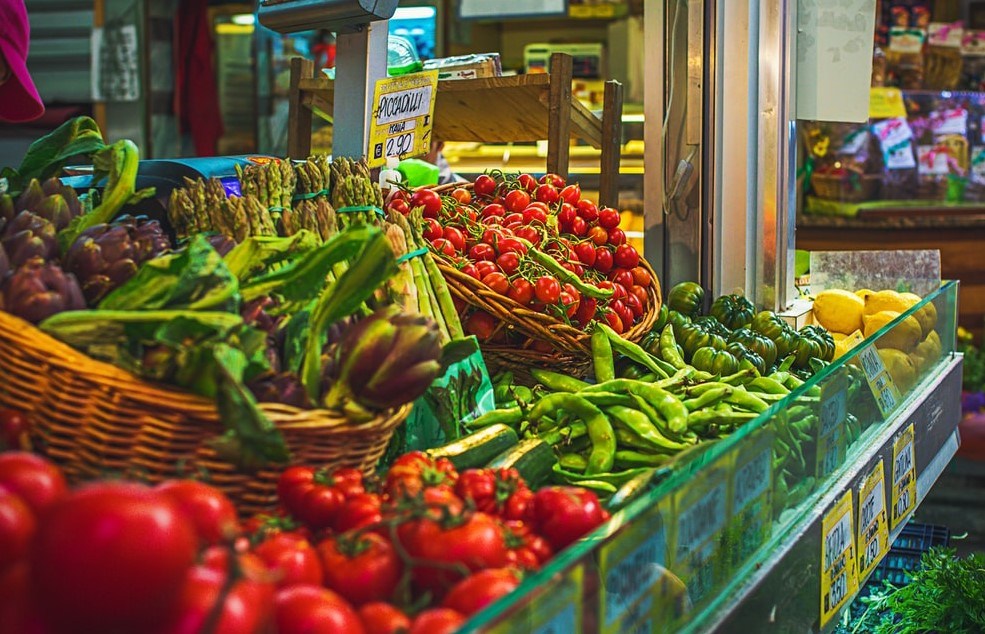More people are going hungry because of the coronavirus crisis, an annual study by the United Nations has found. Across the planet, the pandemic could tip over 130 million more people into chronic hunger by the end of 2020.
The latest edition of the State of Food Security and Nutrition in the World, published yesterday (13 July), estimates that almost 690 million people went hungry in 2019 – up by 10 million from 2018, and by nearly 60 million in five years.
The report is produced jointly by five UN agencies: The Food and Agriculture Organization of the United Nations (FAO), the International Fund for Agriculture (IFAD), the United Nations Children’s Fund (UNICEF), the UN World Food Programme (WFP) and the World Health Organization (WHO).
Writing in the Foreword, the heads of the five agencies warn that “five years after the world committed to end hunger, food insecurity and all forms of malnutrition, we are still off track to achieve this objective by 2030.”
About 9 % of world population are hungry
Asia remains home to the greatest number of undernourished (381 million). Africa is second (250 million), followed by Latin America and the Caribbean (48 million). The global prevalence of undernourishment – or overall percentage of hungry people – has changed little at 8.9 percent, but the absolute numbers have been rising since 2014.
The figures hide great regional disparities: in percentage terms, Africa is the hardest hit region and becoming more so, with 19.1 percent of its people undernourished. This is more than double the rate in Asia (8.3 percent) and in Latin America and the Caribbean (7.4 percent). On current trends, by 2030, Africa will be home to more than half of the world’s chronically hungry.
As progress in fighting hunger stalls, the pandemic is intensifying the vulnerabilities and inadequacies of global food systems. While it is too soon to assess the full impact of the lockdowns, the report estimates that at a minimum, another 83 million people, and possibly as many as 132 million, may go hungry in 2020 as a result of the economic recession triggered by COVID-19.
3 million people cannot afford a healthy diet
Overcoming hunger and malnutrition in all its forms (including undernutrition, micronutrient deficiencies, overweight and obesity) is about more than securing enough food to survive: what people eat – and especially what children eat – must also be nutritious. Yet a key obstacle is the high cost of nutritious foods and the low affordability of healthy diets for vast numbers of families.
The report presents evidence that a healthy diet costs far more than US$ 1.90/day, the international poverty threshold. It puts the price of even the least expensive healthy diet at five times the price of filling stomachs with starch only. Nutrient-rich dairy, fruits, vegetables and protein-rich foods (plant and animal-sourced) are the most expensive food groups globally.
The latest estimates are that a staggering 3 billion people or more cannot afford a healthy diet. According to the report, in 2019, between a quarter and a third of children under five (191 million) were stunted or wasted – too short or too thin. Another 38 million under-fives were overweight. Among adults, meanwhile, obesity has become a global pandemic in its own right.
The report urges a transformation of food systems to reduce the cost of nutritious foods and increase the affordability of healthy diets through interventions along the entire food supply chain, in the food environment, and in the political economy that shapes trade, public expenditure and investment policies.
Wet markets and food supply
Because of the outbreak of the coronavirus, the suspected transmission of the virus from a wet market and the role of these markets in the food supply has been thrust into the limelight. According to a WHO statement in April, wet markets, are "an important source of affordable food and livelihood for millions of people all over the world”.
An estimated 70% of all new viruses come from animals, according to WHO, and there is a risk of zoonotic transmission of viruses from animals to humans at markets where life animals are slaughtered for customers. The markets have been temporarily closed in China. WHO sent last week a team to China to prepare an evaluation of the source of the coronavirus.
WHO’s position is that when these markets are allowed to reopen, it should only be on the condition that they conform to stringent food safety and hygiene standards. The sale of wild life should be banned. WHO is working with FAO to develop guidance on the safe operation of markets. A spokesperson for FAO did not respond immediately to a request for comment.
The Brussels Times

